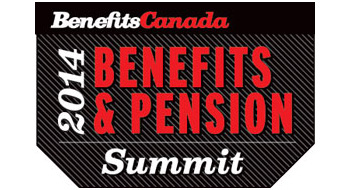
“We are trying to solve the wrong problem,” Jacqueline Taggart, associate partner and regional practice leader with Aon Hewitt, told the audience at Benefits Canada’s Benefits & Pension Summit in Toronto. She was talking about benefits communications and why so many plan sponsors are struggling to make members care about their plans.
The issue isn’t a shortage of communication, or that plan members don’t understand how they should manage their health and their benefits, she argued. Rather, it all comes down to action—sponsors are failing in getting members to act.
“We are not connecting with what’s really important: motivation,” she said. “What motivates us is much more important than a whole raft of information.”
Taggart advocated looking to four basic marketing principles when executing your organization’s HR communication plan.
- Repetition over time. Too many plan sponsors spend all their efforts encouraging employees to enrol but then neglect to follow up with benefits updates later in the year, said Taggart. Instead, she advocates spacing the messaging out over time, to remind members what they have available to them and why they should care beyond the enrollment month.
- Targeting fuels motivation. The more personalized a message, the more likely it will encourage someone to act. “Understand what matters to me,” said Taggart. “Speak to me.”
- Wants are more important than needs. Plan members generally know what they need to do—there’s just no motivation for them to want to do it, said Taggart. “We don’t need any more benefits information. I need to understand why I might want to do something with the things that are offered to me.”
- Keep the focus on the customer. Employees don’t care about your plan, warned Taggart. They care about what’s happening with their home, their family, their health, their finances and so on. And while these concerns may tie into a benefits plan, it’s often not until members are processing a claim that they’re likely to think about that relationship. A good communication plan will enable them to see—and appreciate—that connection.
However, understanding these principles on their own isn’t enough. In order to reach their audience and inspire action, plan sponsors need to make use of segmentation—that is, identifying the differing attitudes regarding health and wellness, then targeting messages to speak to those groups.
Rupen Seoni, vice-president and practice leader with Environics Analytics, noted in his portion of the session that today’s media is all about tailored segmentation, even outside the workplace. Changing demographics in the general population and the differing social values of older and younger generations have forced media to splinter off into different channels and hone their messaging to meet the market.
“We have a whole marketplace of employees [who] are also consumers used to seeing a lot of choice and a lot of segmentation toward what it is that they are interested in,” said Seoni. “A more segmented world means a more segmented workforce.”
All the articles from the event can be found on our special section: 2014 Benefits & Pension Summit Coverage.
Tammy Burns is a Toronto-based writer and editor.
